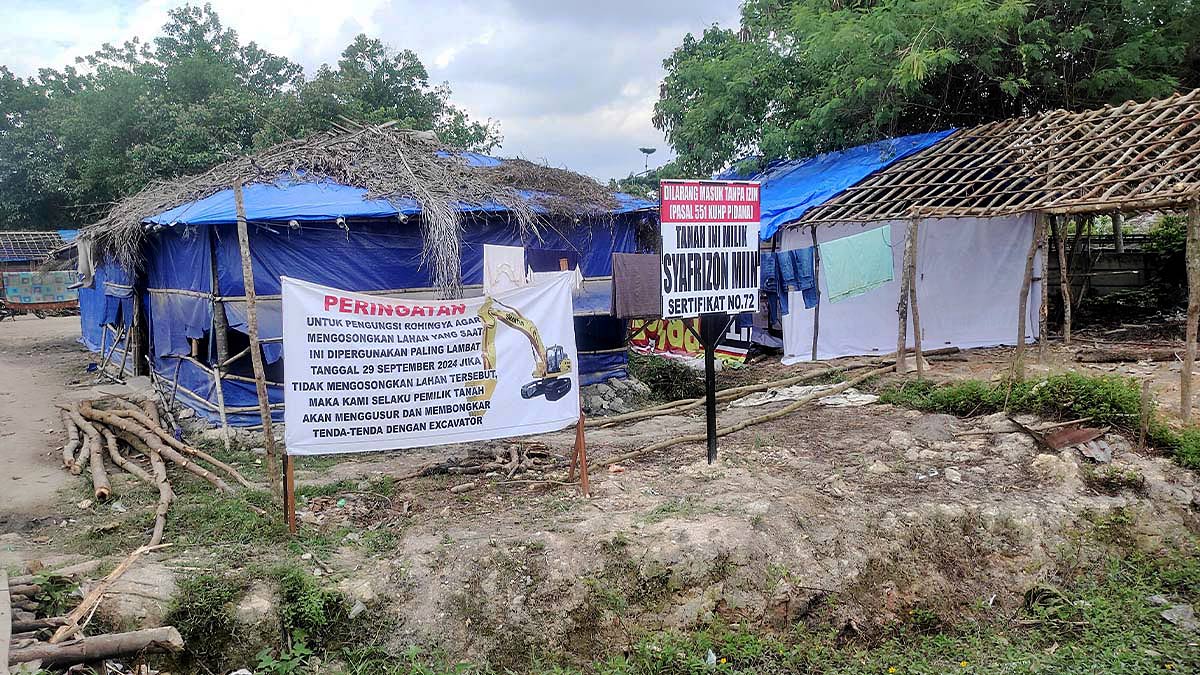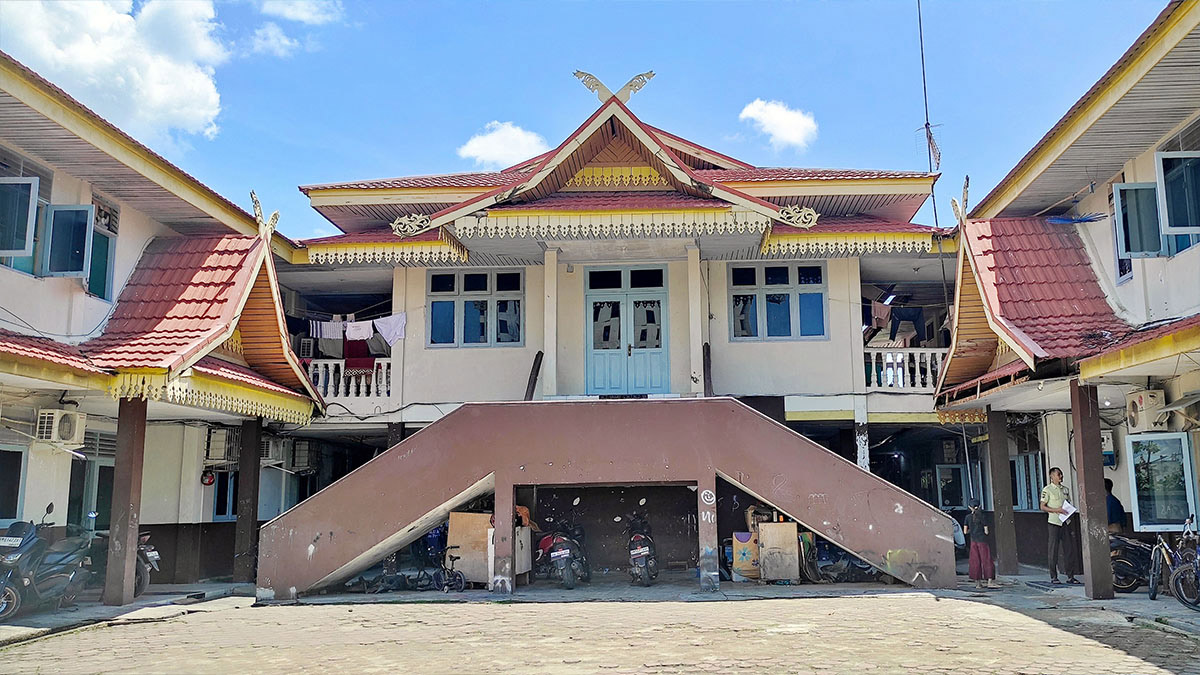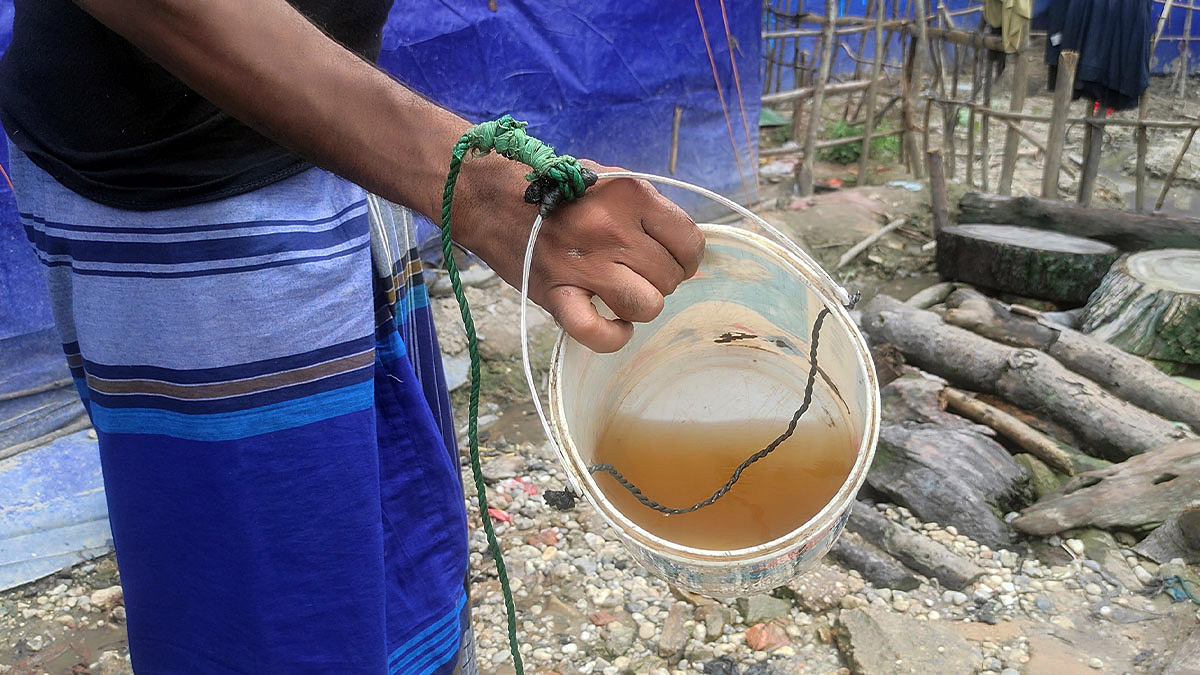Rohingya Refugees’ Better Lives in Riau
The Rohingya refugees living in Pekanbaru have more freedom to move around and reside in lodgings. Their children can also attend school.
Anggun R. Alifah
October 21, 2024

SEVERAL makeshift blue tarp tents stood at the end of Jalan O.K.M. Jamil, in Pekanbaru, Riau, on Thursday, October 10, 2024. These tents were erected by Rohingya refugees from Myanmar on a vacant lot not far from the Pekanbaru City Immigration Detention Center.
The refugees got the tarp for the tents from local residents, and the wood for the poles and supports was gathered from the ‘forest’—a vacant, overgrown area nearby. No fewer than 350 Rohingya, including children, live there. They fled their homeland when unrest erupted there.
Shoufique Alom, who lives in one of the tents, arrived in Indonesia about two years ago with his wife and children. “There was chaos in Myanmar. We couldn’t sit, couldn’t eat, and the government expelled us. That’s why we left our country,” Shoufique said in broken Indonesian.
Shoufique and his family first stayed in a temporary shelter in Aceh. However, the shelter was far from adequate. He also complained about the food, which was unfit and insufficient. The taste of the food did not suit their palate and even made them sick. But their main problem was the restriction of movement. They could not freely engage in activities and were not allowed to leave the shelter.
“Indonesians provided a place, the IOM provided a place, but it felt like we were in prison. We couldn’t go anywhere,” said Shoufique. IOM, or the International Organization for Migration, is a United Nations agency promoting humane migration.
Shoufique later heard from fellow refugees who received better facilities in Pekanbaru, which made him interested in moving to the provincial capital of Riau. He and his family fled from the shelter. “I walked alone. It took a week to get here from Aceh. There were people already here, and we heard about it before coming,” he said.
Shoufique now lives with hundreds of other refugees on this vacant lot. His family occupies a tent. Inside, there are two bamboo beds. One is used as a kitchen table, and the other, larger one is used for various needs, including sleeping, storing items, and playing with his children.
Shoufique said he receives assistance from the IOM, such as a monthly allowance of Rp1.25 million (around US$80) for adults and Rp500,000 (US$32) for children. “It’s just for food. Sometimes it’s enough, sometimes it’s not, because things are expensive. We came here not looking for much, just to survive. If it’s not enough, we just endure it,” he said.

Shofique Alom shows the inside of a refugees’ tent in Pekanbaru, Riau, October 10, 2024. Photo Courtesy of Anggun R. Alifah
To meet their needs, the refugees often forage for vegetables like water spinach and mushrooms that grow wild around the area. They also received identification cards, which could be used to get medical treatment at a designated clinic.
The refugee community here also worked together to dig several wells about one meter in diameter for daily needs. The water from the peatland they dug is brown like tea, but they are forced to use it every day for bathing and washing, as well as for cooking and drinking. “There’s a pond here, but the water is black. The soil isn’t good. People use it for washing and cleaning, and we drink it. We bathe once every two or three days,” Shoufique said.
•••
THE Pekanbaru City Government, in cooperation with the IOM and the United Nations High Commissioner for Refugees (UNHCR), has provided more adequate housing in eight locations, namely Wisma Indah Sari, Hotel Satria, Wisma Siak Resort, Wisma Fanel, Rumah Tasqya, Wisma Orchid, Kost Nevada, and Wisma D’Cope. These lodgings accommodate refugees from Afghanistan, Iran, Iraq, Myanmar, Pakistan, Palestine, Sudan, and Somalia, who have obtained residence permits.
According to data from Pekanbaru’s National Unity and Politics Agency, as of October 2024, 965 refugees were spread across these eight locations. The largest groups were from Afghanistan (626 people) and Myanmar (296 people). Other groups were much smaller, ranging from two to 14 people. However, there are still some Rohingya refugees, like Shoufique Alom, who have not yet been accommodated in these lodgings and must stay on the land near the Immigration Detention Center. “Those who are living in the tents at the back, they have registered,” said Rio Okto Edward, Chief of the National Vigilance and Conflict Management Section of Pekanbaru’s National Unity and Politics Agency, on Friday, October 11.
Khabid Achmad, a Rohingya refugee, now lives in one of the rooms at Wisma Indah Sari, located about two kilometers from Shoufique’s tent. Each room houses one family. This two-story guesthouse currently accommodates 105 refugees, 36 of whom are Rohingya.

Wisma Indah Sari, a temporary residence for Rohingya refugees in Pekanbaru, Riau, October 10, 2024. Photo Courtesy of Anggun R. Alifah
Khabid fled Myanmar in 2015 and lived in Malaysia before moving to Aceh to join his wife, who had arrived earlier. They then stayed in a temporary shelter for six months.
The IOM later helped Khabid and his family move to Pekanbaru and stay at one of the guesthouses. Khabid did not fully understand the requirements for being placed in a guesthouse. He was only informed of the rules that must be followed while living in the host city. “The IOM brought us from Aceh. Here in Indonesia, there are laws. Don’t make mistakes, just sit quietly,” Khabid said on Sunday, October 13.
According to the IOM, the relocation of refugees results from coordination between its agency and local governments of both the originating and destination areas. Those prioritized for relocation include families with relatives already living in the guesthouses, unaccompanied children, and individuals with protection issues, such as victims of violence.

A refugee shows groundwater procured from the camp site in Pekanbaru, Riau, October 10, 2024. Photo Courtesy of Anggun R. Alifah
Khabid receives a monthly allowance and an identification card that can be used for medical treatment. One of his two children even attends a local elementary school. Currently, 62 refugee children attend various elementary and high schools in Pekanbaru.
To meet their living needs, Khabid and his fellow refugees farm. They obtained permission from the local community to cultivate vacant land, where they plant vegetables and fruits, including corn, okra, pumpkins, gourds, eggplants, and chilies. They consume some of the crops and sell the rest at the market.
Khabid and the other refugees are still waiting to be resettled in a third country, hoping for a better life. This waiting period could last several years or even decades, depending on the policies of the destination country. Khabid said he is resigned to whatever plan God has in store for him and his family.
